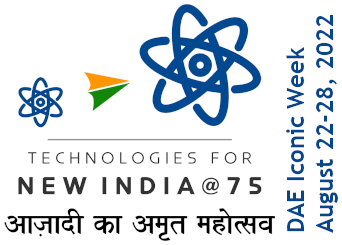Past Colloquia
| Title : |
Origin of ultra-low thermal conductivity in complex chalcogenides: Effect of intergrowth nanostructure, lone pair and anharmonic rattling |
|
| Speaker | : | Prof. Kanishka Biswas, JNCASR, Bengaluru, |
| Date | : | August 17, 2016 |
| Time | : | 4:00 PM |
| Venue | : | Lecture Hall-1 |
| Abstract | : |
Thermoelectric materials can directly and reversibly convert waste heat into electrical energy, and will play a significant role in future energy management. One of the fundamental challenge in developing high-performance thermoelectric materials has been to achieve low lattice thermal conductivity (κL). The exploration of new materials with intrinsically low κL along with a microscopic understanding of the underlying correlations among bonding, lattice dynamics and phonon transport is fundamentally important towards designing promising thermoelectric materials. The origin of lattice anharmonicity and the ensuing ultralow κL in the I-V-VI2 chalcogenides such as AgSbSe2, AgBiSe2, AgBiS2 and AgBiSeS has been traced to the electrostatic repulsion between the stereochemically active ns2 lone pair of group V cation and the valence p-orbital of group VI anion.1 InTe [i.e. In+In3+Te2], a mixed valent compound, exhibit an ultralow κL, which manifests an intrinsic bonding asymmetry with coexistent covalent and ionic substructures.2 The phonon dispersion of InTe exhibits, in addition to low-energy flat branches, weak instabilities associated with the rattling vibrations of In+ atoms along the columnar ionic substructure. These weakly unstable phonons originate from the 5s2 lone pairs of adjacent In+ atoms and are strongly anharmonic, which scatter the heat-carrying acoustic phonons through phonon-phonon interactions. AgCuS exhibits ultra low κL and it composed of softly coupled cationic and anionic substructures, and undergoes a transition to a superionic phase with changes in the substructure of mobile ions with temperatures.3 Electronic density of states and phonon dispersion reveal that the rigid sulphur sublattice is primarily responsible for the electronic charge transport, whereas soft vibrations and mobility of Ag/Cu ions are responsible for the ultra-low thermal conductivity. Formation of layered intergrowth nanostructures in solid matrix by kinetic matrix encapsulation can also lead to ultralow κL. 1. Guin, S. N.; Chatterjee, A.; Negi, D. S.; Datta, R. and Biswas, K. Energy Environ. Sci. 2013, 6, 2603. 2. Jana, M. K.; Pal, K.; Waghmare, U. V. and Biswas, K. Angew. Chem Int. Ed, 2016, 55, 7792. 3. Guin, S. N.; Pan, J.; Bhowmik, A.; Sanyal, D.; Waghmare, U. V. and Biswas, K. J. Am. Chem. Soc., 2014, 136, 12712. 4. Banik, A.; Vishal, B.; Perumal, S.; Datta, R. and Biswas, K. Energy Environ. Sci. 2016, 9, 2011. |




